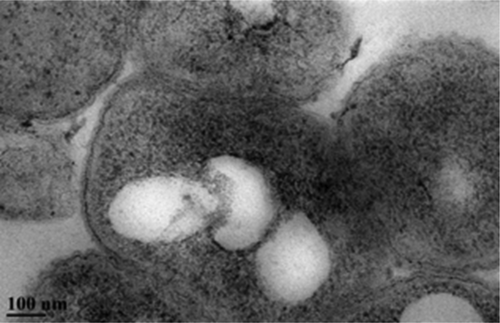当前位置:
X-MOL 学术
›
ACS Sustain. Chem. Eng.
›
论文详情
Our official English website, www.x-mol.net, welcomes your feedback! (Note: you will need to create a separate account there.)
Utilization of Dielectrophoresis for the Quantification of Rare Earth Elements Adsorbed on Cupriavidus necator
ACS Sustainable Chemistry & Engineering ( IF 8.4 ) Pub Date : 2020-01-14 , DOI: 10.1021/acssuschemeng.9b03878 Ezekiel O. Adekanmbi 1 , Anthony T. Giduthuri 1 , Sahara Waymire 1 , Soumya K. Srivastava 1
ACS Sustainable Chemistry & Engineering ( IF 8.4 ) Pub Date : 2020-01-14 , DOI: 10.1021/acssuschemeng.9b03878 Ezekiel O. Adekanmbi 1 , Anthony T. Giduthuri 1 , Sahara Waymire 1 , Soumya K. Srivastava 1
Affiliation

|
A new method of quantifying rare earth elements (REEs): light REEs (neodymium—Nd3+ and samarium—Sm3+) and heavy REE (europium—Eu3+) was investigated by utilizing native Cupriavidus necator as the biosorbent and dielectrophoresis as the quantification technique.C. necator was characterized as a control through the measurement of the first and second crossover frequencies in a polymer-based (PDMS) point-and-planar microwell platform at 8 Vpp (peak-to-peak voltage) ac signal and variable frequencies. Allied C. necator in its metal-bound state was then characterized for each of the REEs adsorbed. The first crossover frequency (fco1) was correlated with the amount of metal adsorbed that was obtained through spectrophotometry. The influence of pH, biosorbent dosage, initial REE concentration, and REE incubation period was further investigated to study the effects of those on the biosorption process. It was found that the amount of metal biosorbed by the C. necator is directly proportional to the biosorbent dosage and metal incubation period. Exposure to higher REE concentration solutions resulted in higher biosorption, and higher pH of REE solutions (towards neutral range) resulted in abnormal behavior due to the formation of complex salts. The results obtained here, that is, the crossover frequency versus concentration curve would serve as a baseline for other researchers, such that when the crossover frequency of a biosorbent with a particular REE is known, the quantity of that particular REE adsorbed can be correlated without the need of expensive spectrophotometric analysis.
中文翻译:

介电电泳法用于定量吸附在Cupriavidus necator上的稀土元素
利用天然铜杯菌作为生物吸附剂和介电电泳技术研究了一种定量稀土元素的新方法:轻稀土元素(钕-Nd 3+和sa-Sm 3+)和重稀土元素(-Eu 3+)。量化技术。通过在聚合物基(PDMS)点和平面微孔平台中以8 V pp(峰-峰电压)ac信号和可变频率测量第一和第二交叉频率来表征C. necator作为对照。然后针对每个吸附的REE表征处于金属结合状态的盟友梭状芽胞杆菌。第一分频点(f co1)与通过分光光度法获得的金属吸附量相关。进一步研究了pH,生物吸附剂量,初始REE浓度和REE潜伏期的影响,以研究这些因素对生物吸附过程的影响。已发现梭状芽胞杆菌生物吸附的金属量与生物吸附剂的用量和金属的孵育时间成正比。暴露于较高浓度的REE溶液会导致较高的生物吸附,而较高浓度的REE溶液(朝中性范围)会由于形成复杂的盐而导致异常行为。此处获得的结果,即交叉频率对浓度曲线将作为其他研究人员的基线,这样,当已知具有特定REE的生物吸附剂的交叉频率时,可以将特定REE的吸附量关联起来而无需需要昂贵的分光光度分析。
更新日期:2020-01-14
中文翻译:

介电电泳法用于定量吸附在Cupriavidus necator上的稀土元素
利用天然铜杯菌作为生物吸附剂和介电电泳技术研究了一种定量稀土元素的新方法:轻稀土元素(钕-Nd 3+和sa-Sm 3+)和重稀土元素(-Eu 3+)。量化技术。通过在聚合物基(PDMS)点和平面微孔平台中以8 V pp(峰-峰电压)ac信号和可变频率测量第一和第二交叉频率来表征C. necator作为对照。然后针对每个吸附的REE表征处于金属结合状态的盟友梭状芽胞杆菌。第一分频点(f co1)与通过分光光度法获得的金属吸附量相关。进一步研究了pH,生物吸附剂量,初始REE浓度和REE潜伏期的影响,以研究这些因素对生物吸附过程的影响。已发现梭状芽胞杆菌生物吸附的金属量与生物吸附剂的用量和金属的孵育时间成正比。暴露于较高浓度的REE溶液会导致较高的生物吸附,而较高浓度的REE溶液(朝中性范围)会由于形成复杂的盐而导致异常行为。此处获得的结果,即交叉频率对浓度曲线将作为其他研究人员的基线,这样,当已知具有特定REE的生物吸附剂的交叉频率时,可以将特定REE的吸附量关联起来而无需需要昂贵的分光光度分析。


























 京公网安备 11010802027423号
京公网安备 11010802027423号